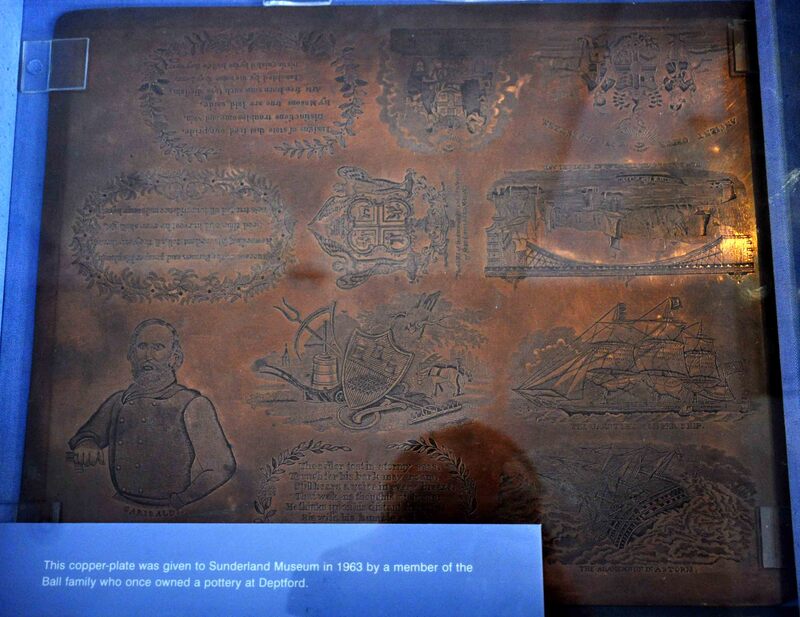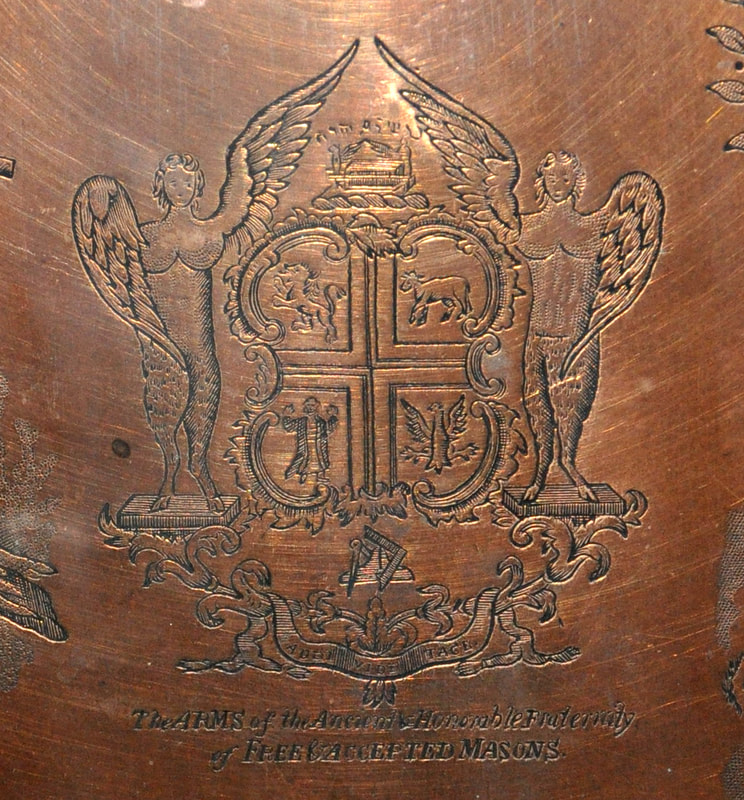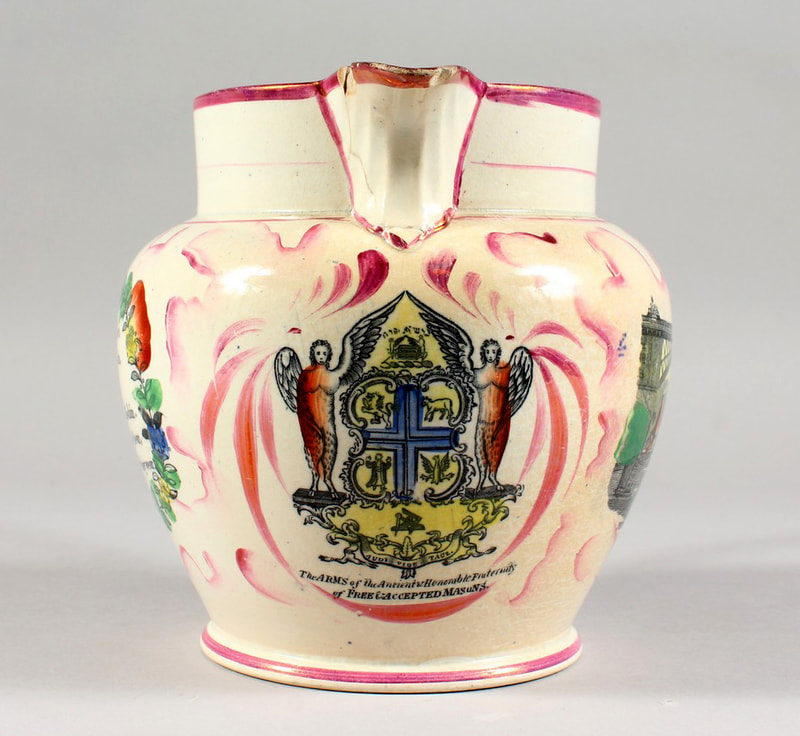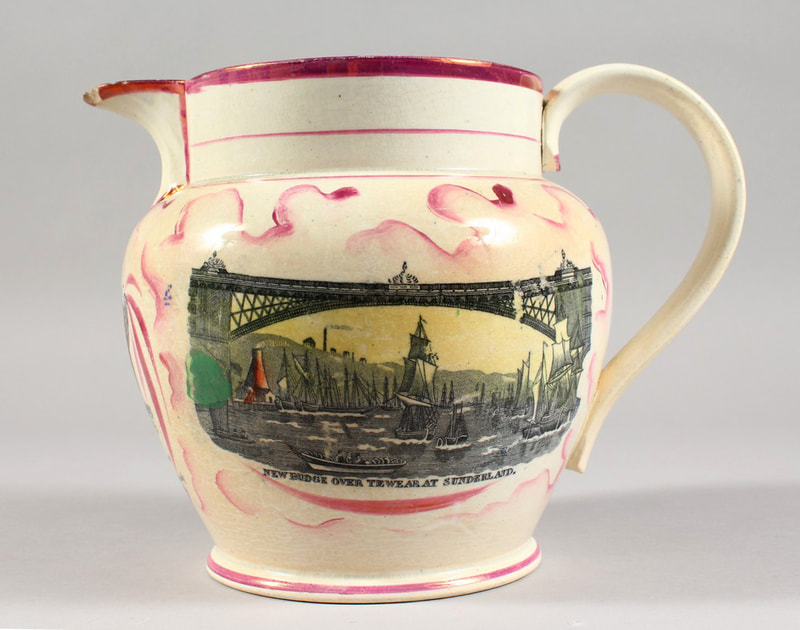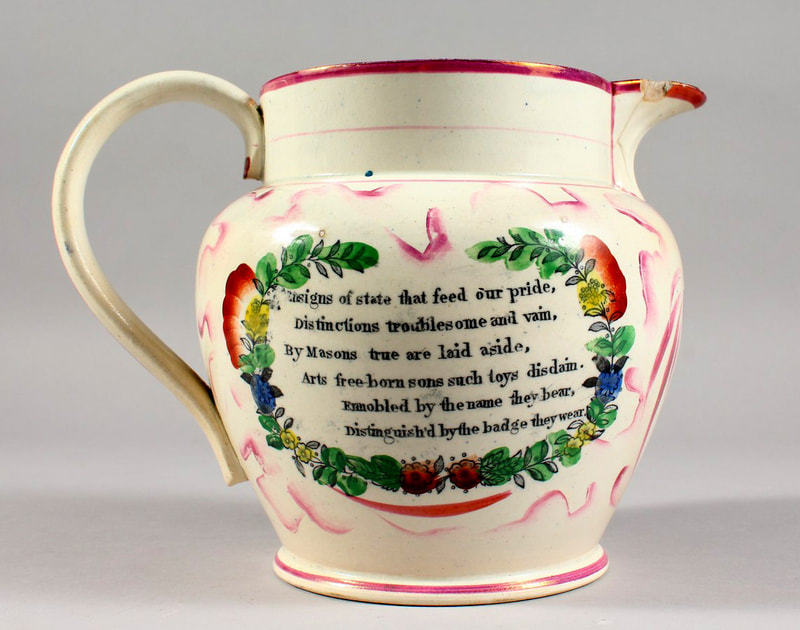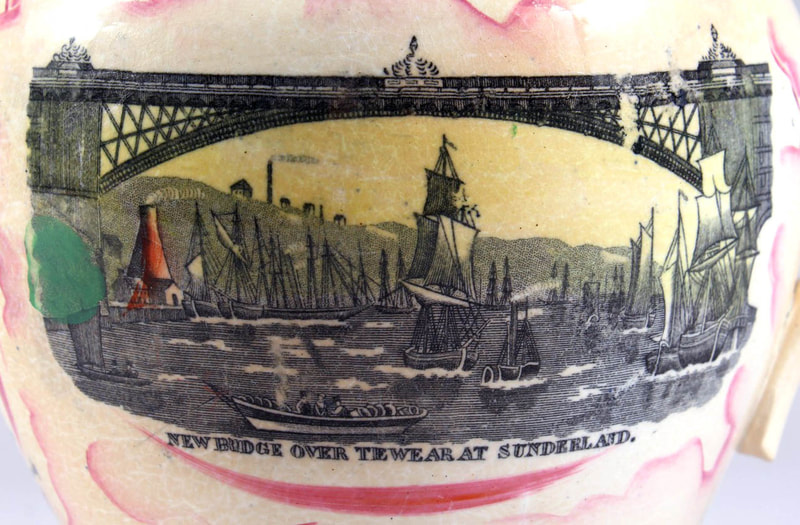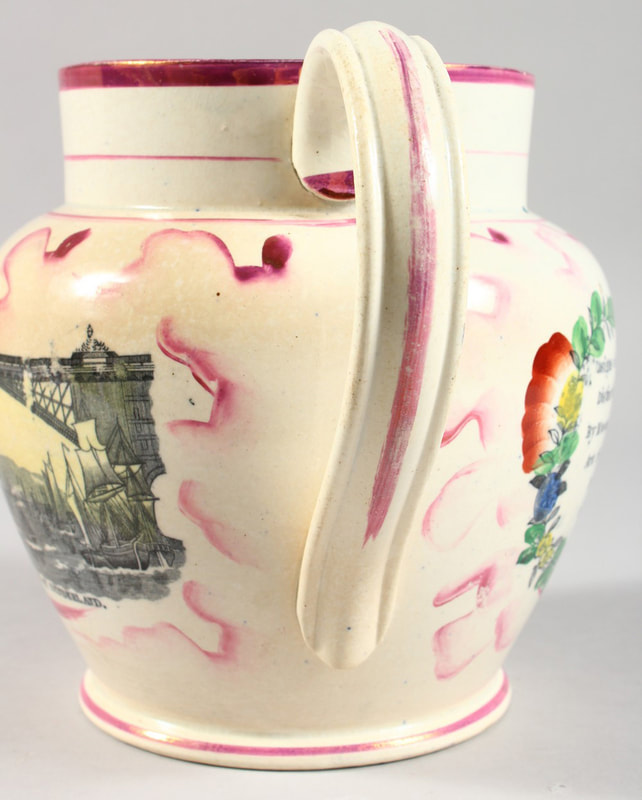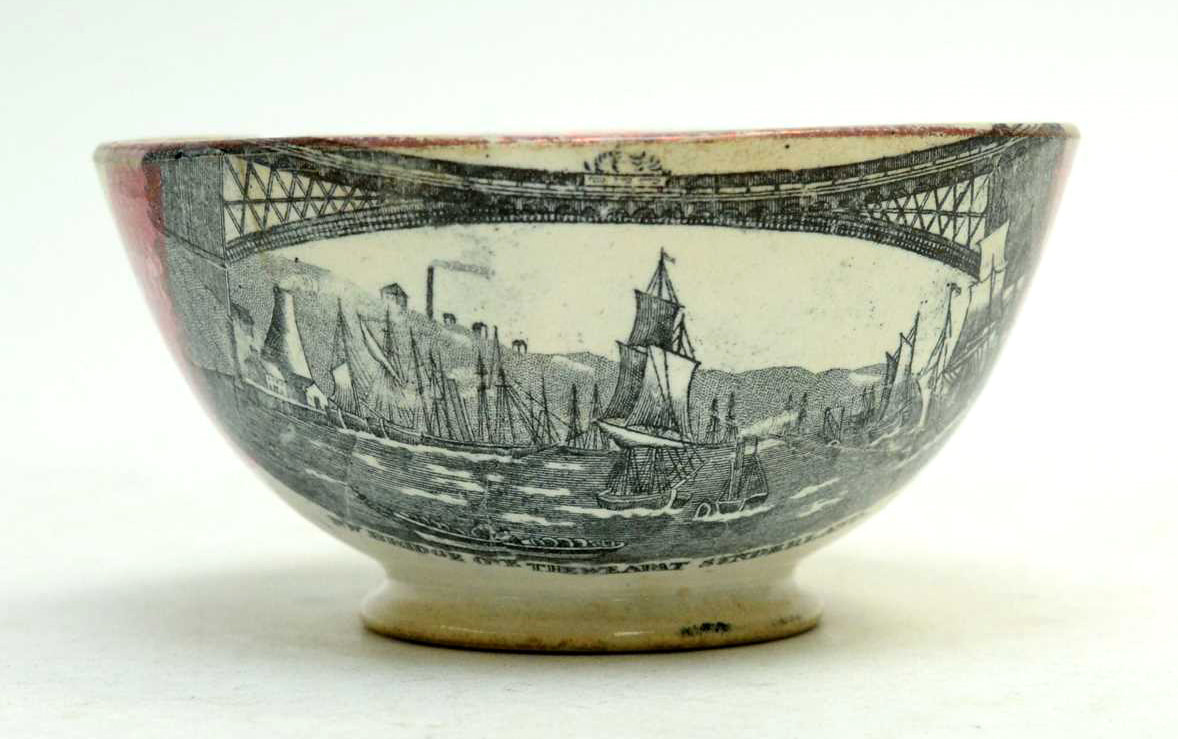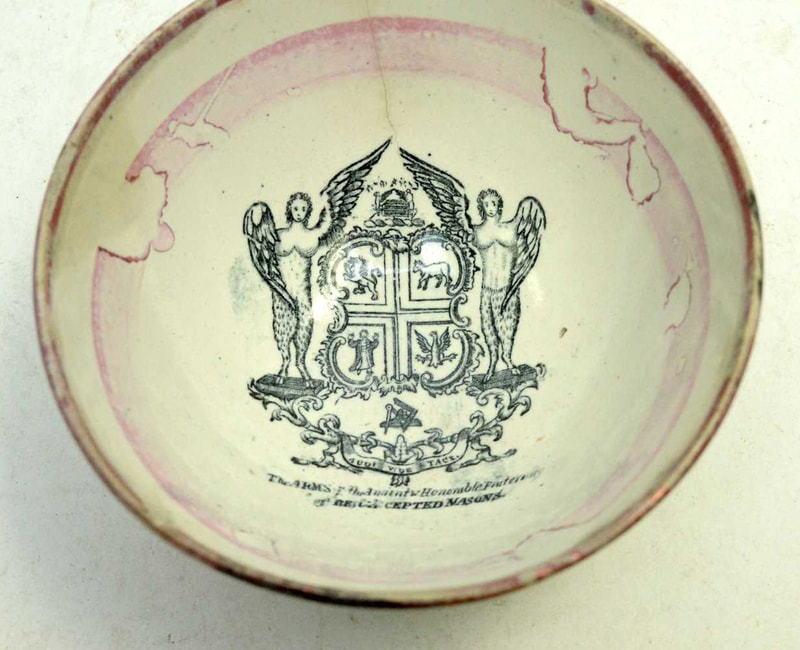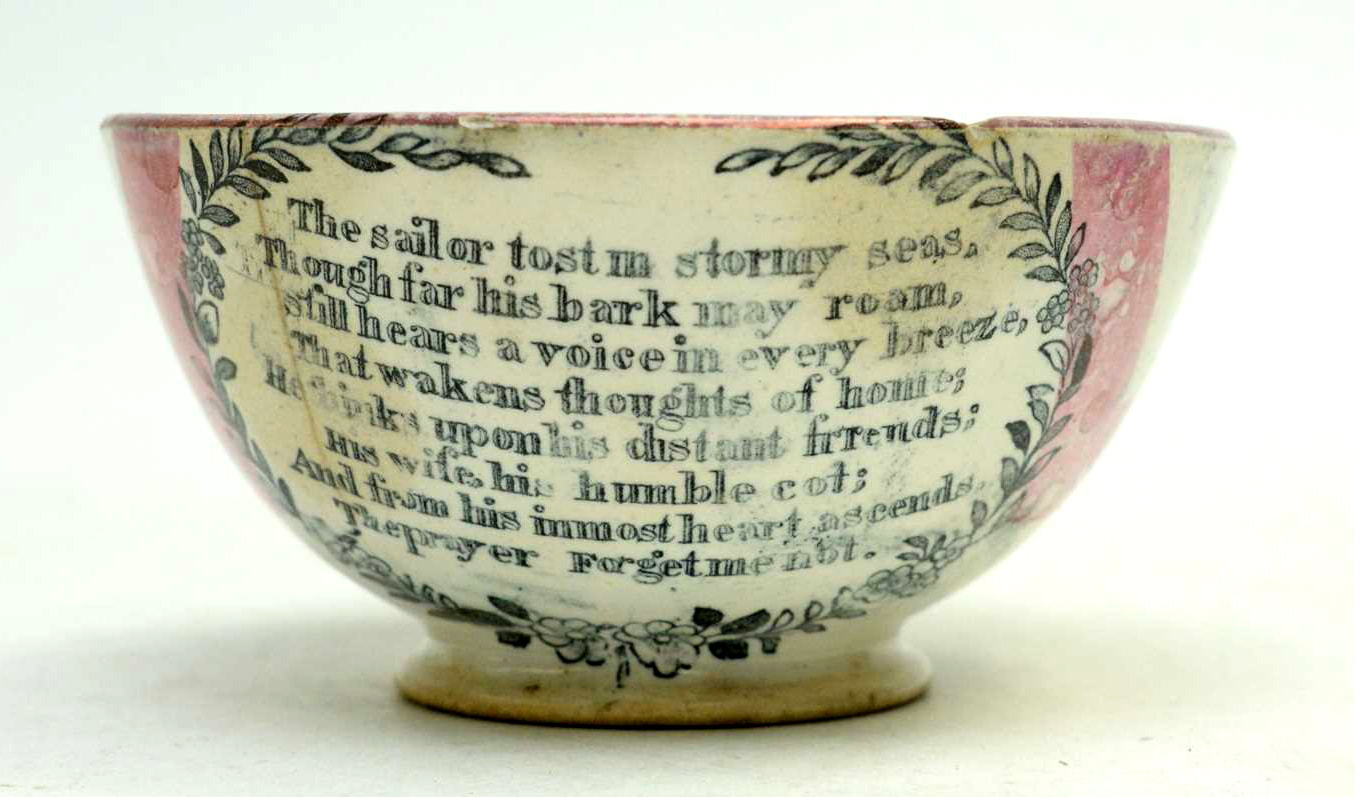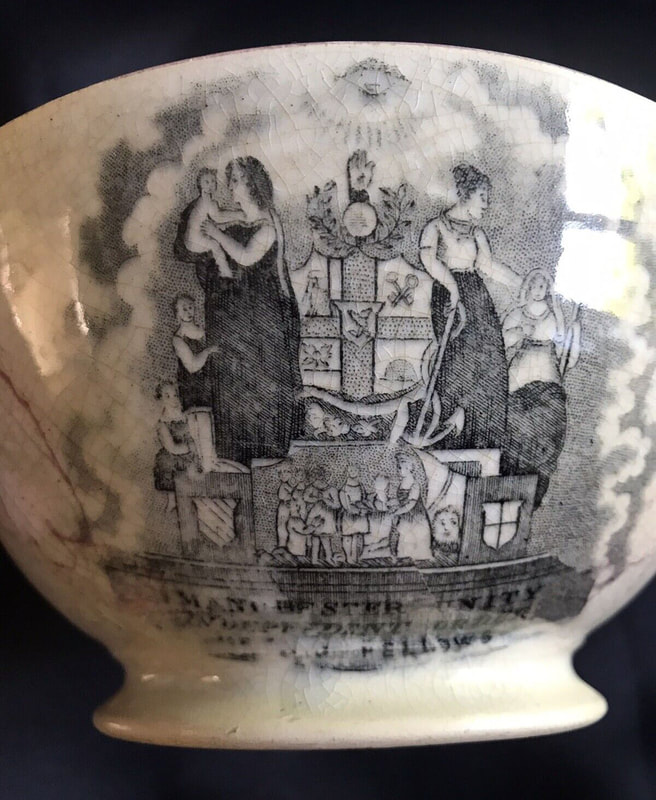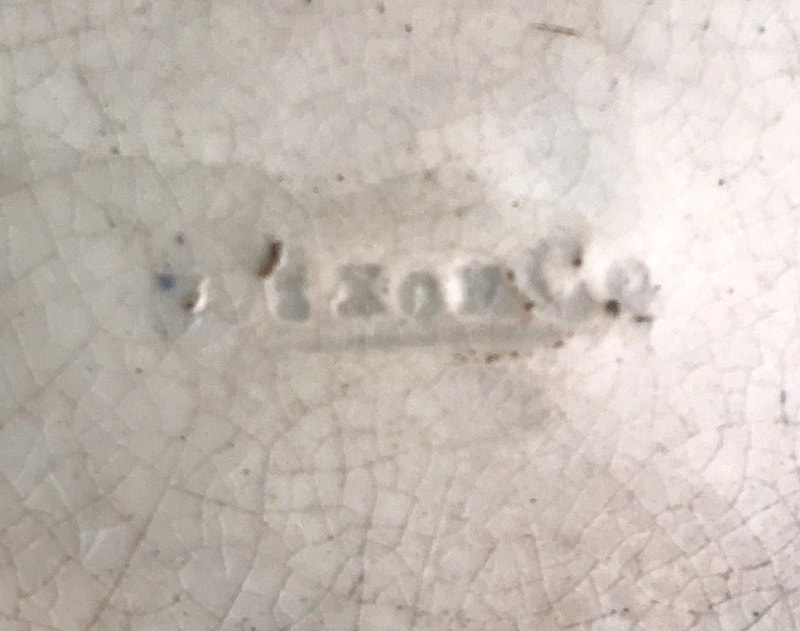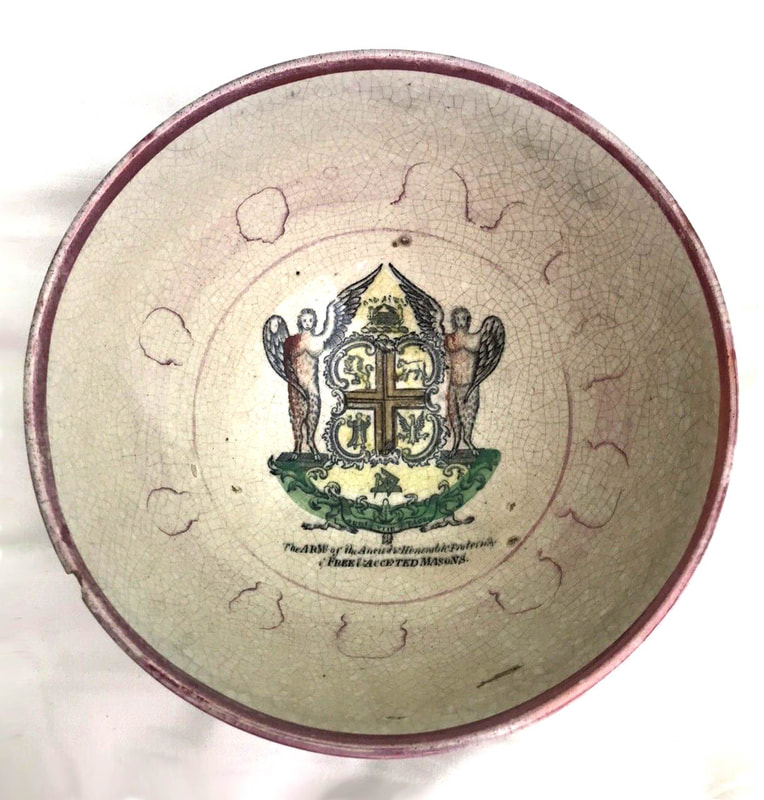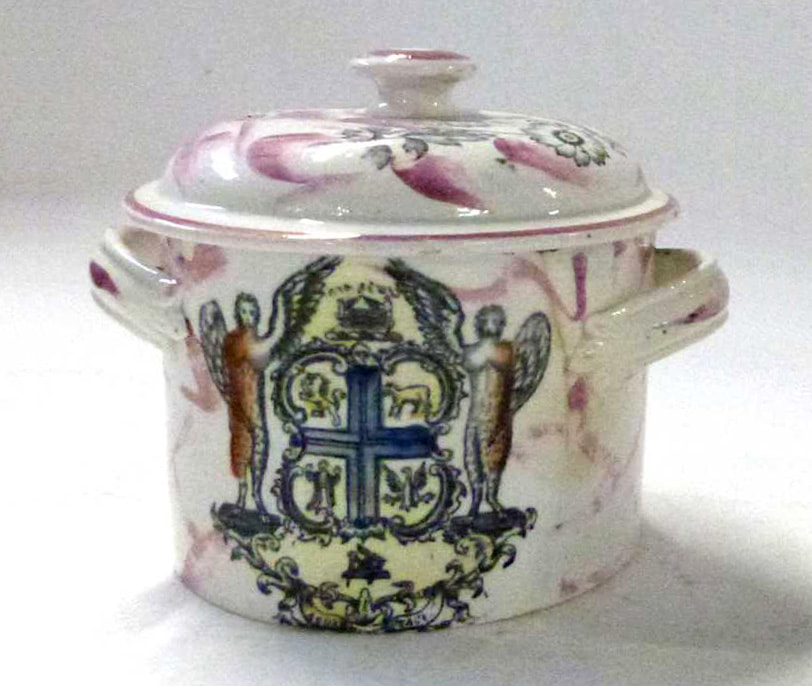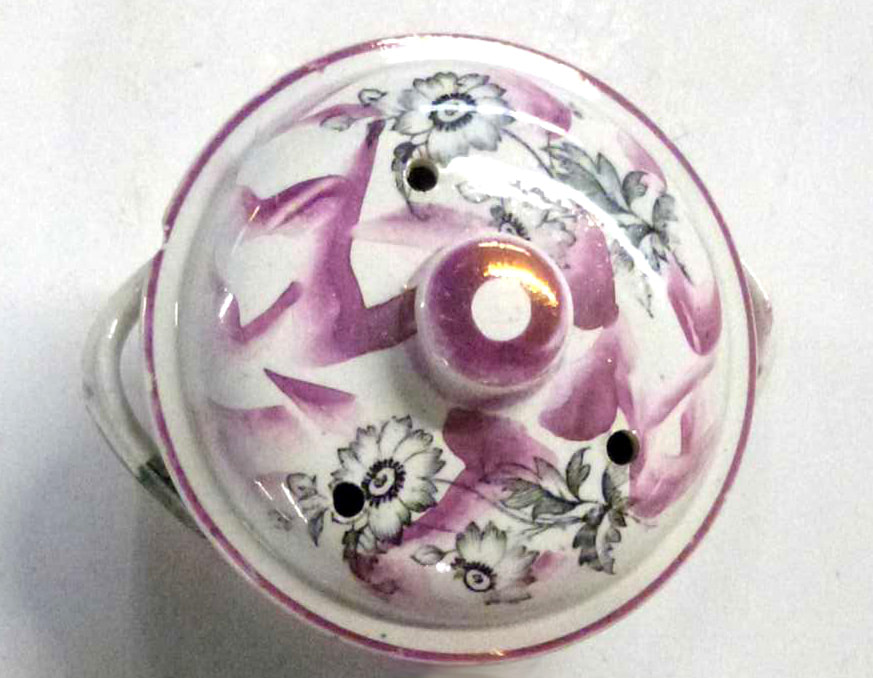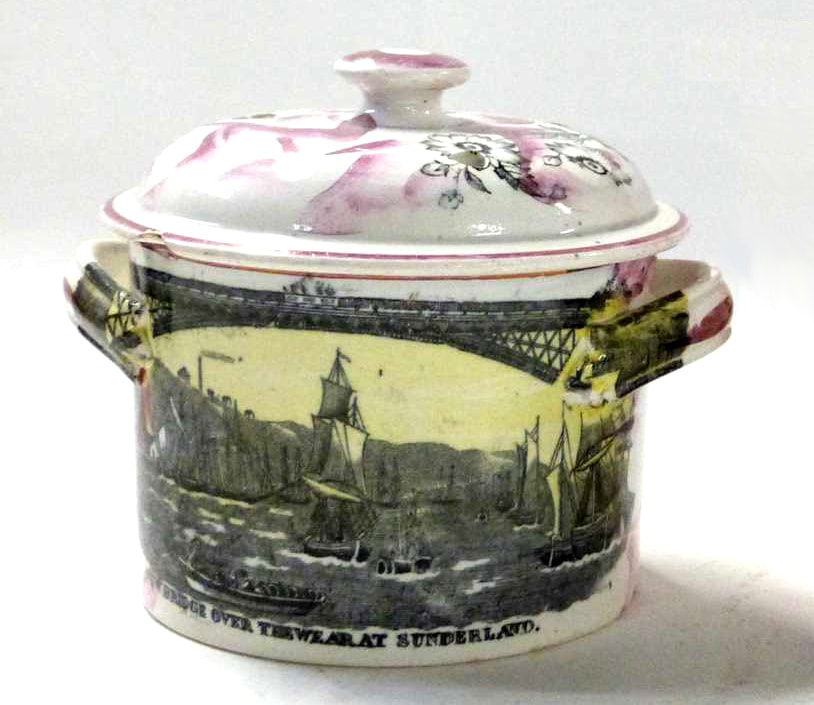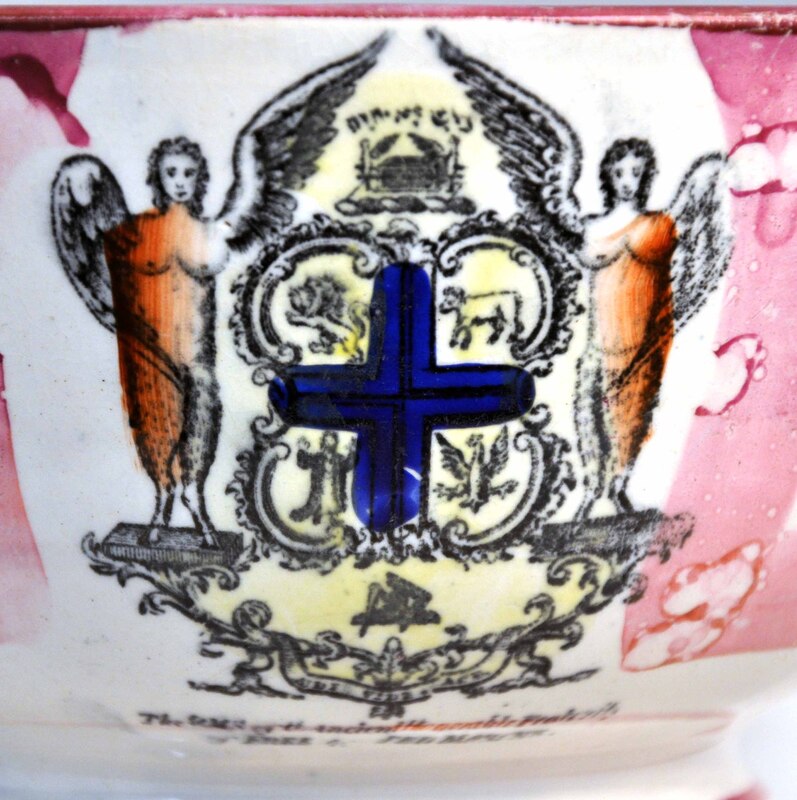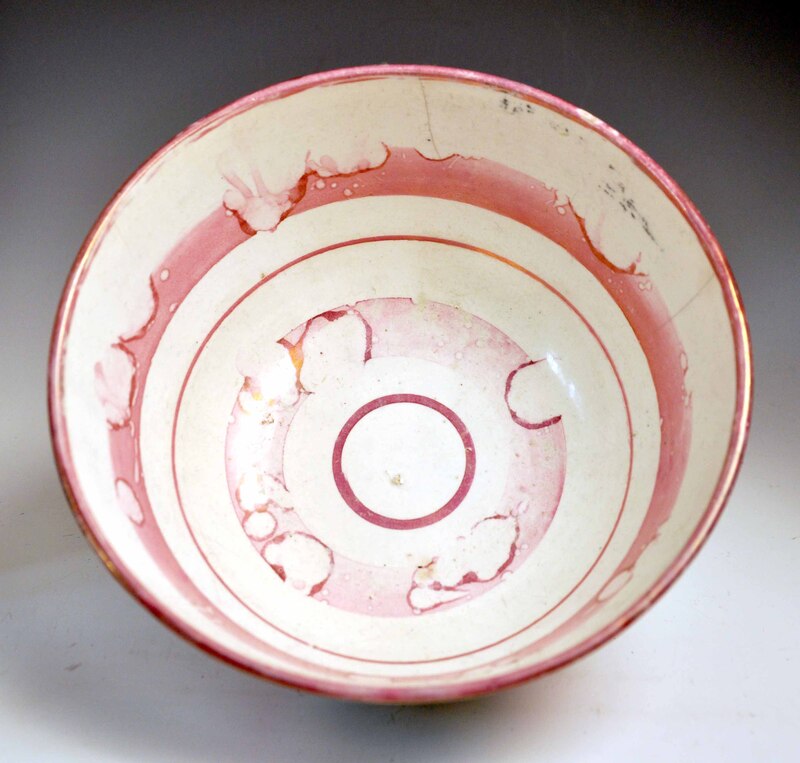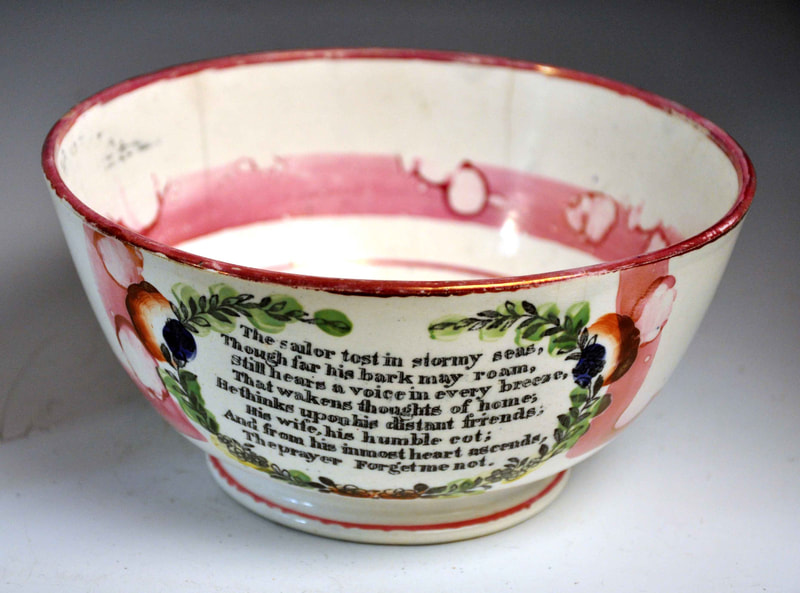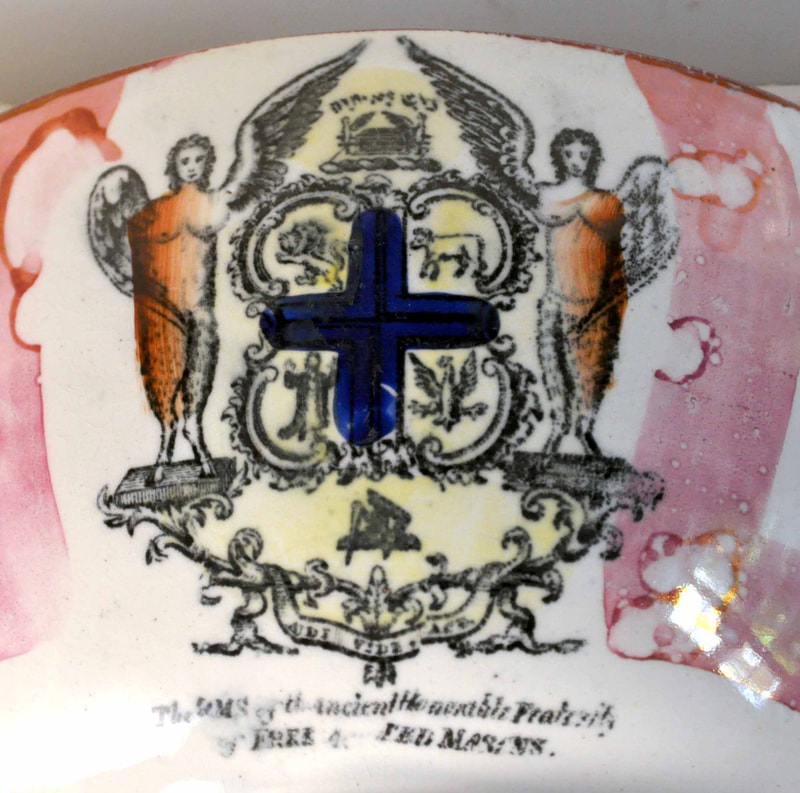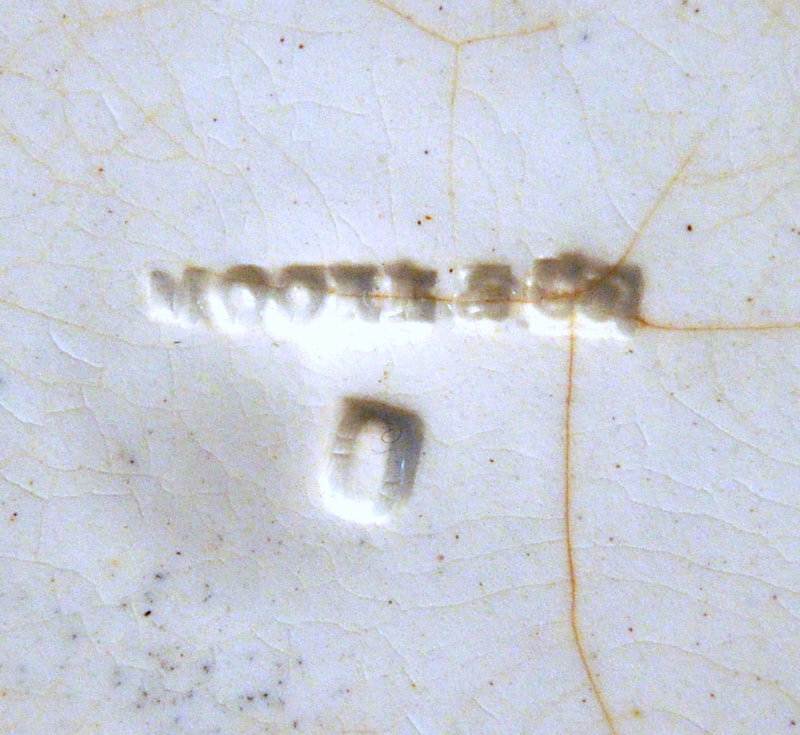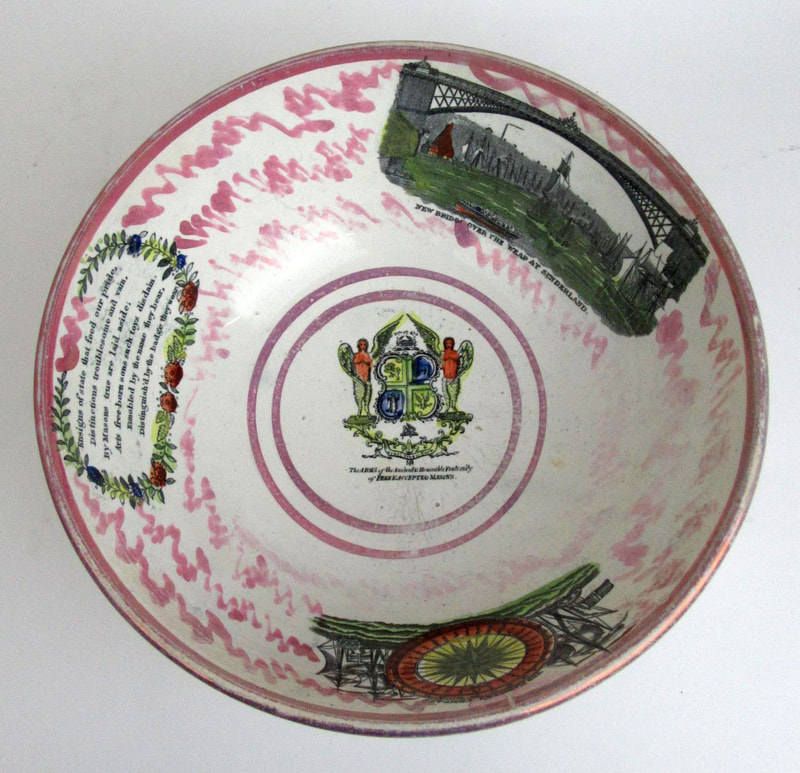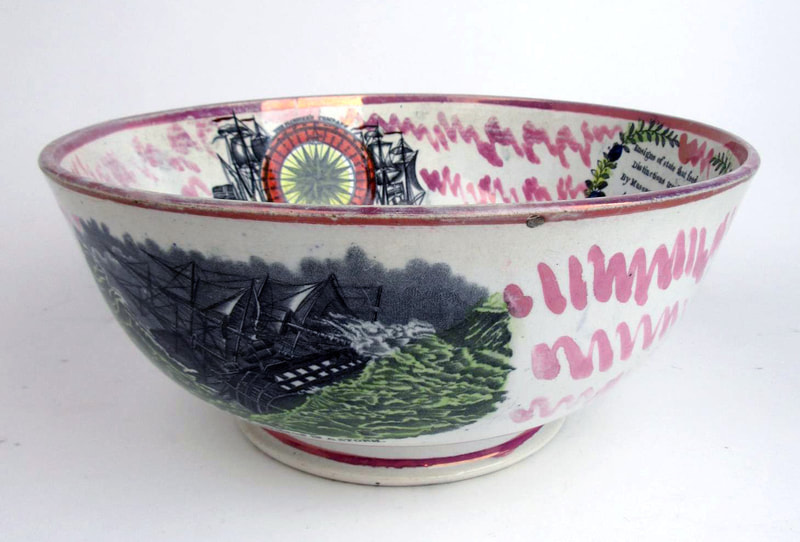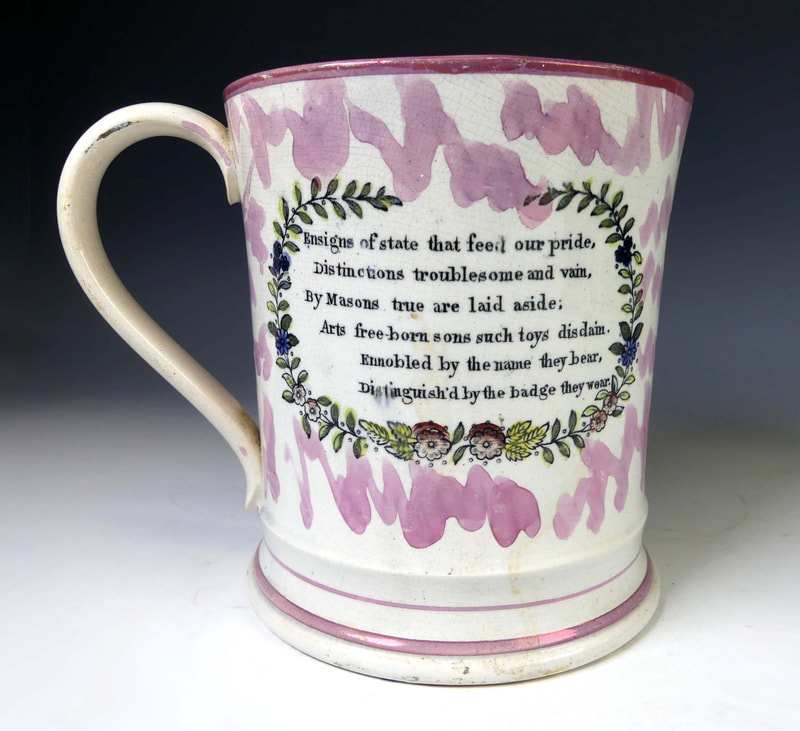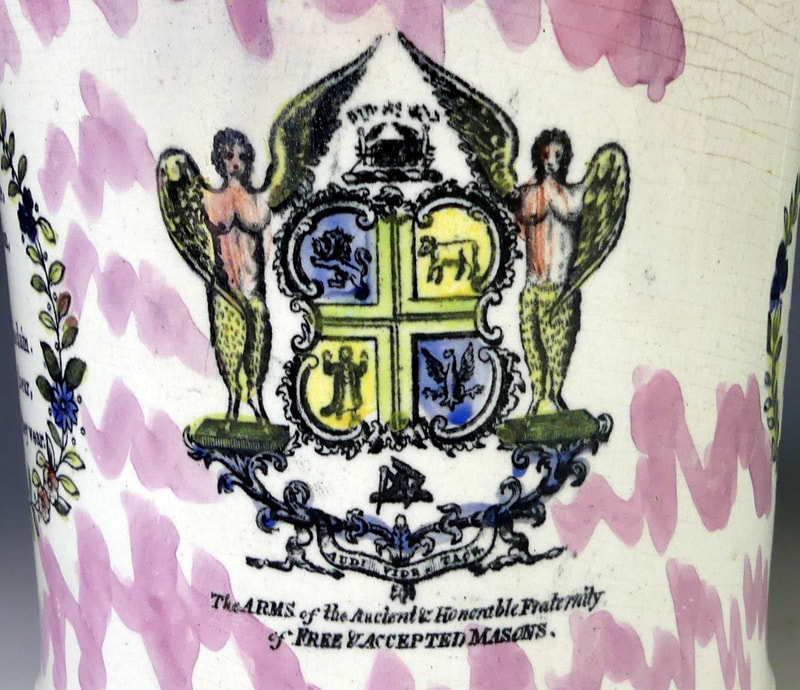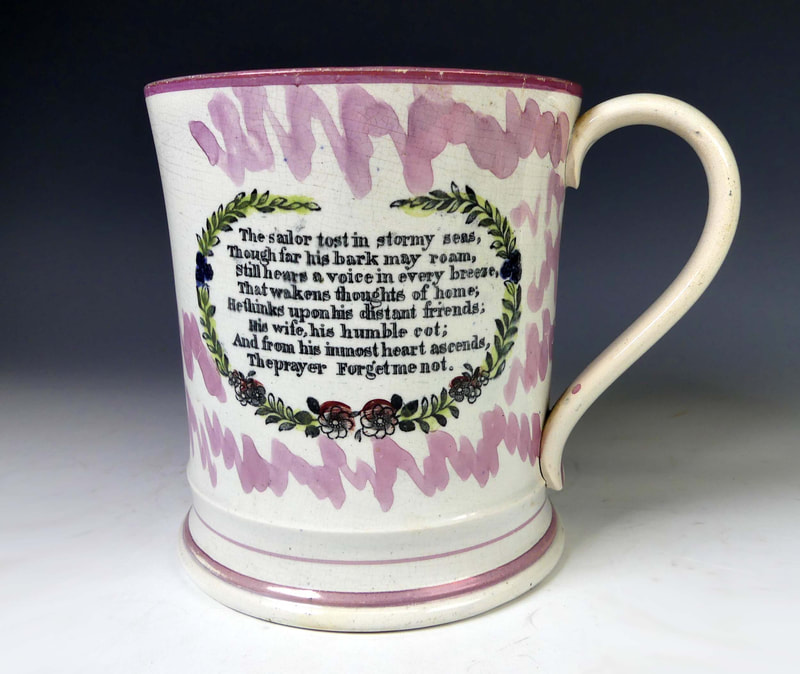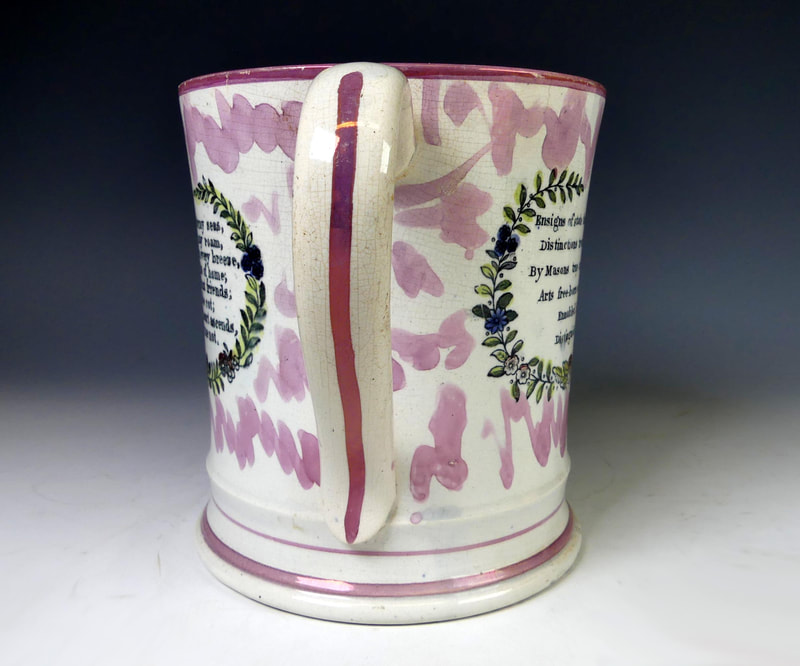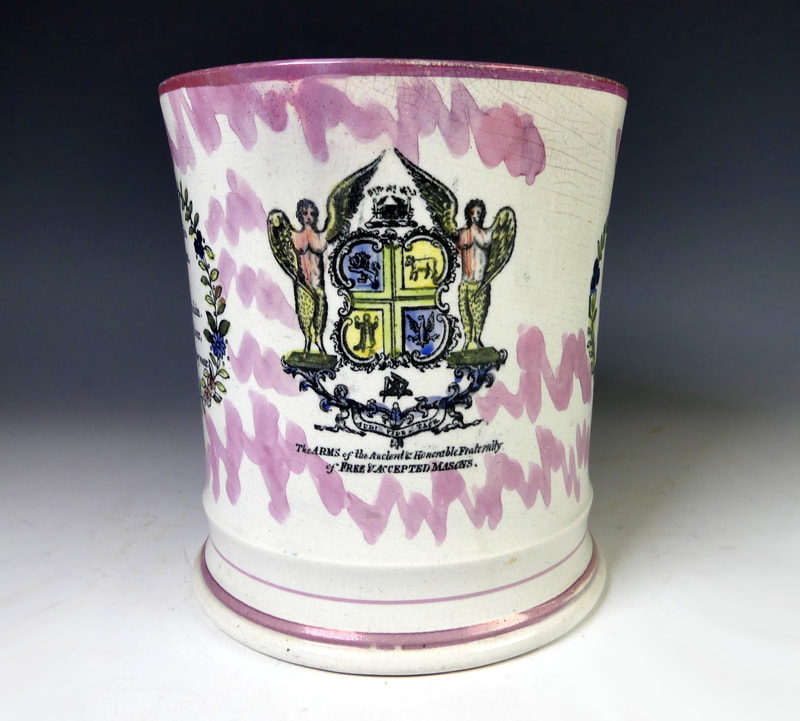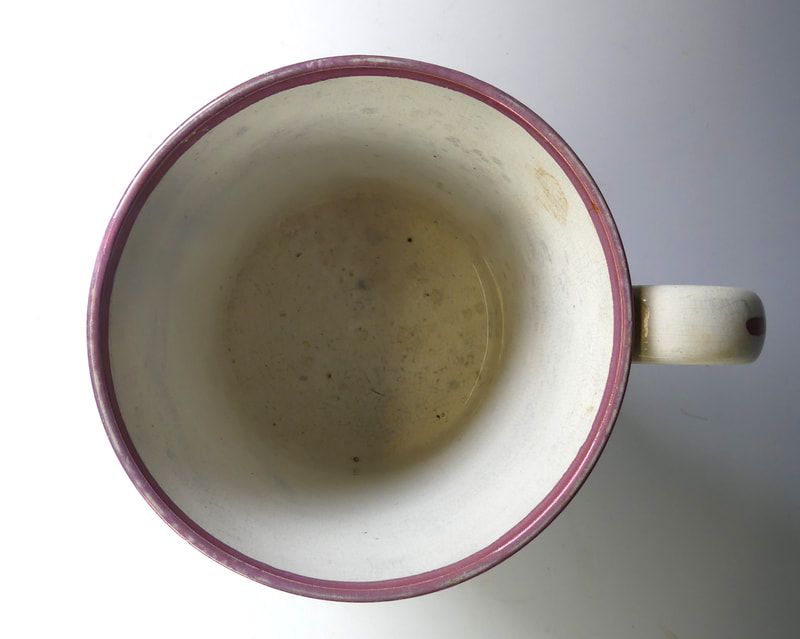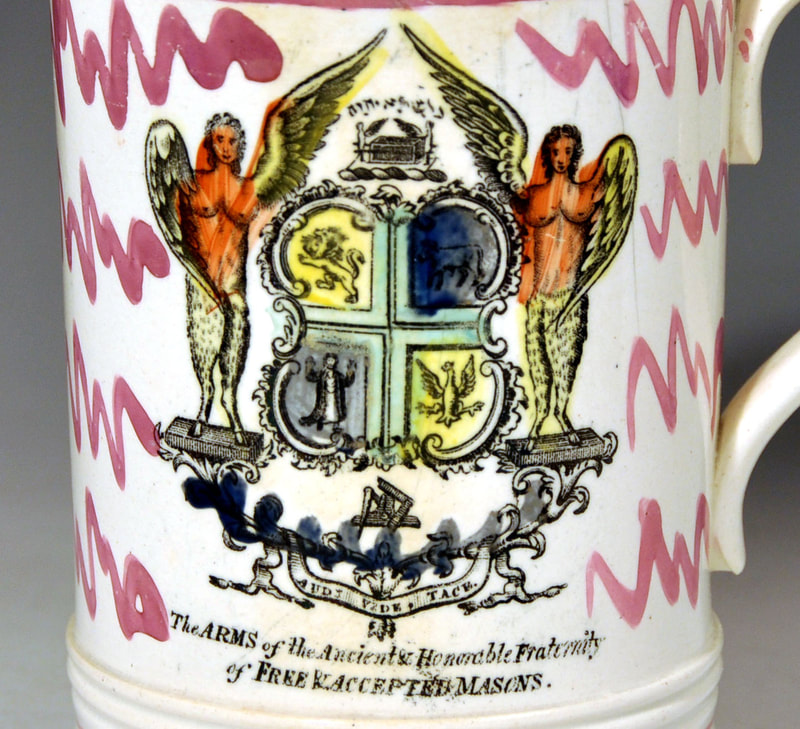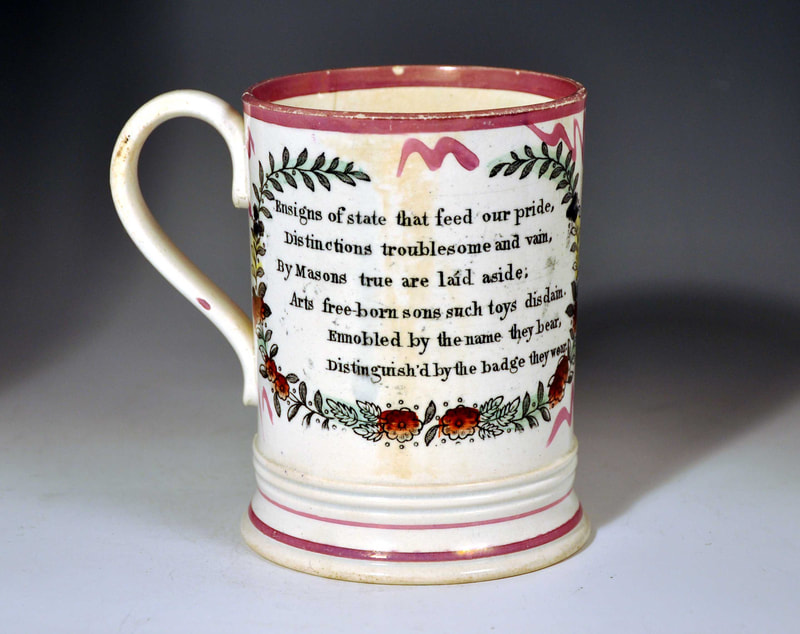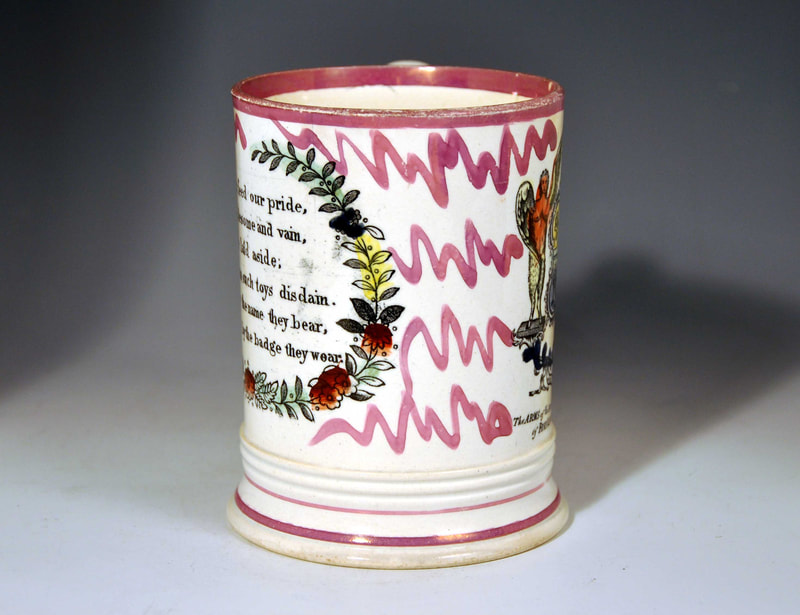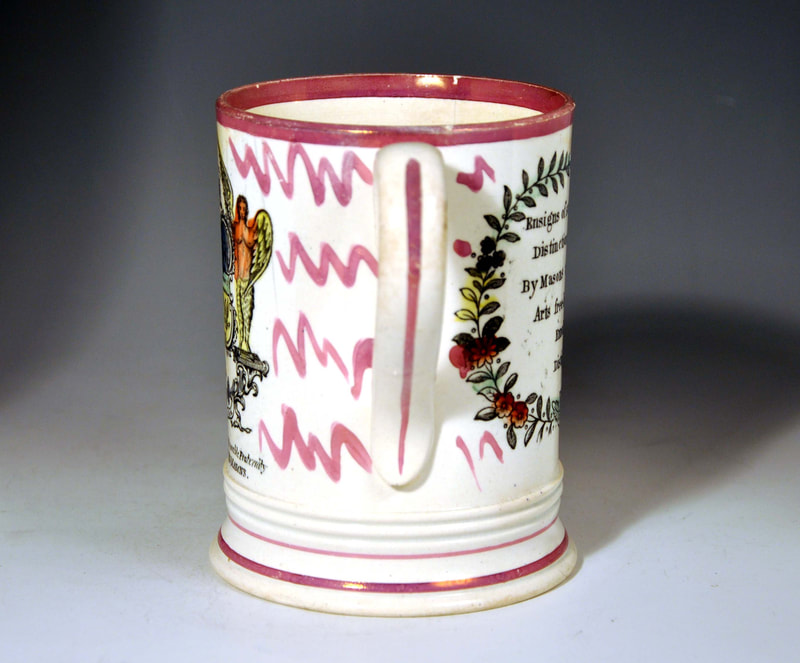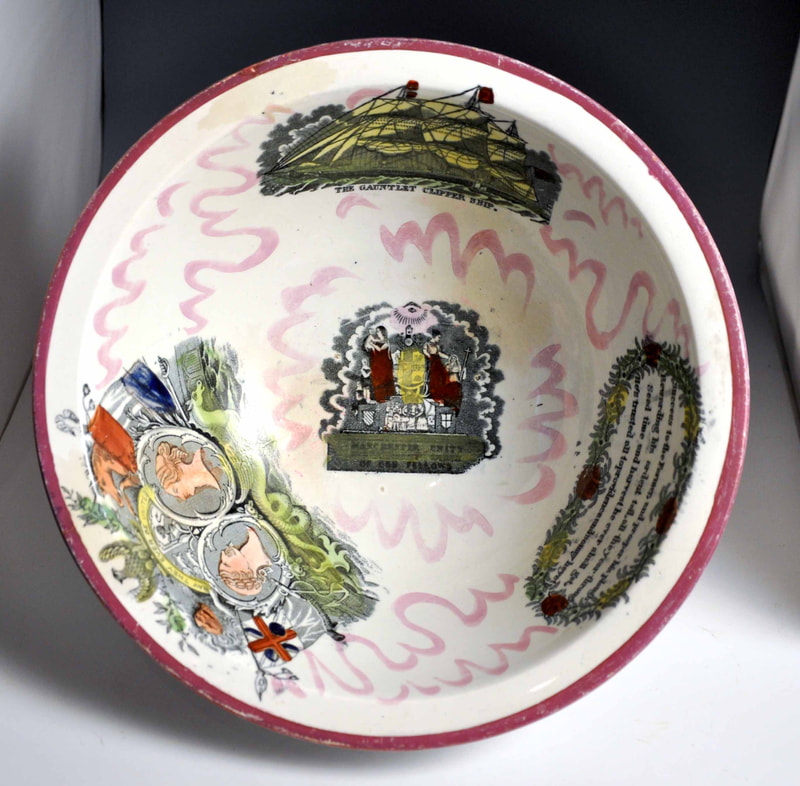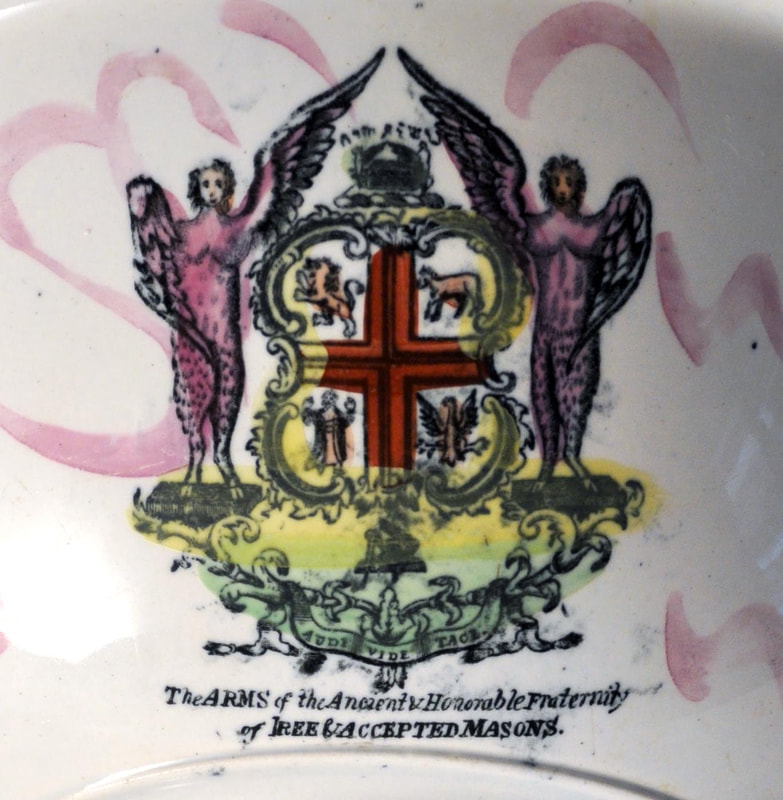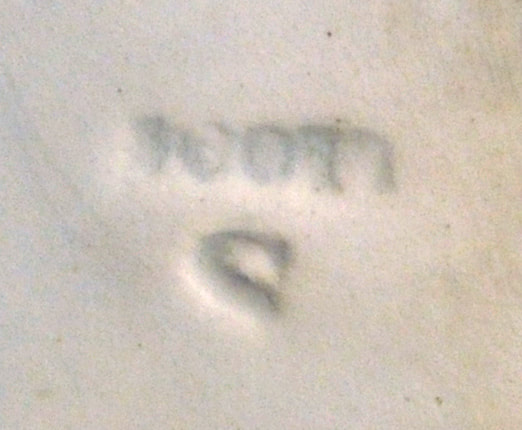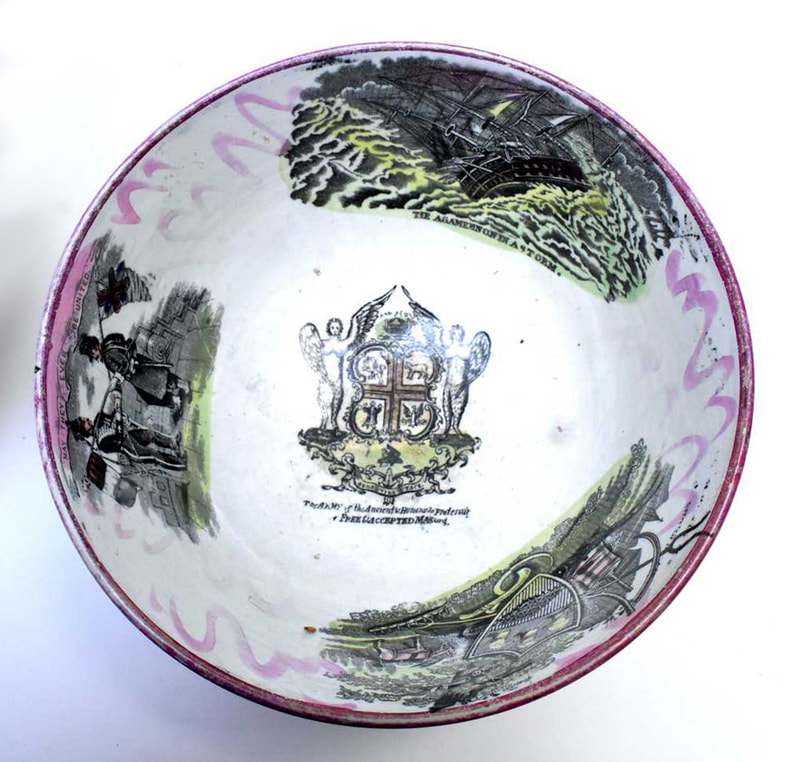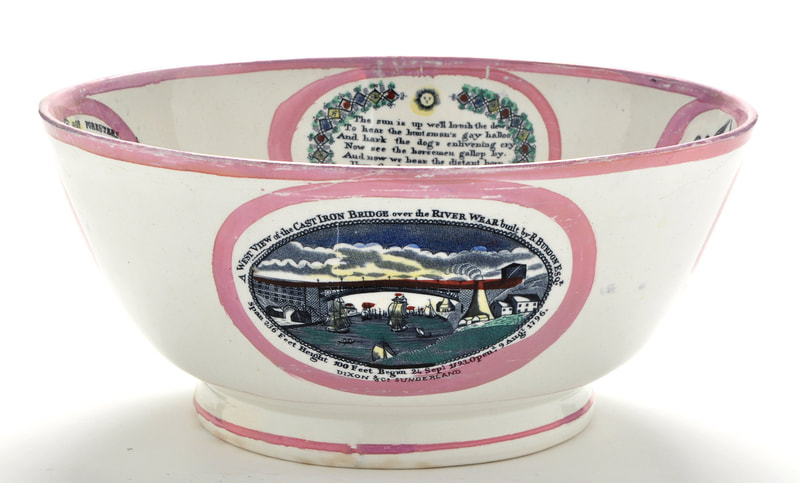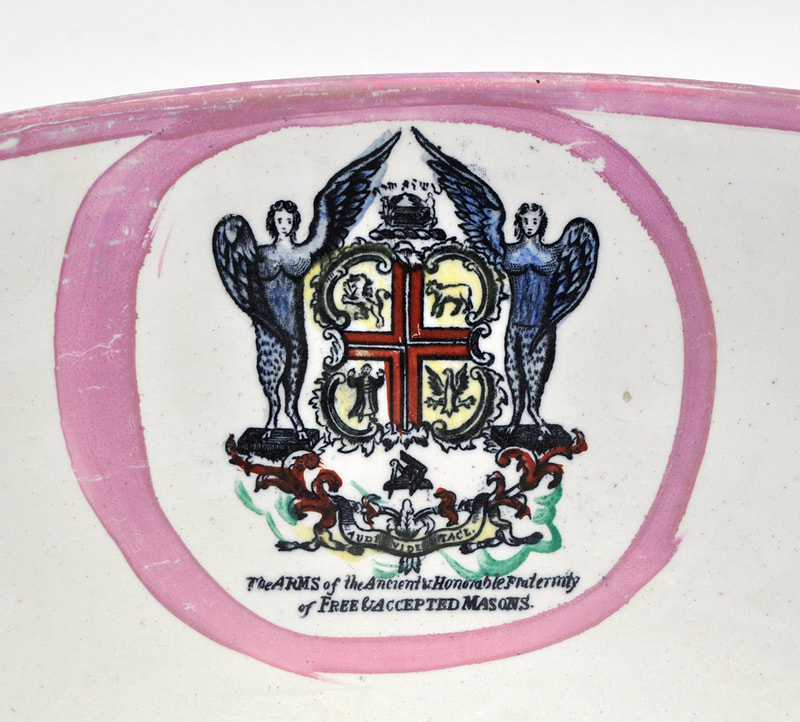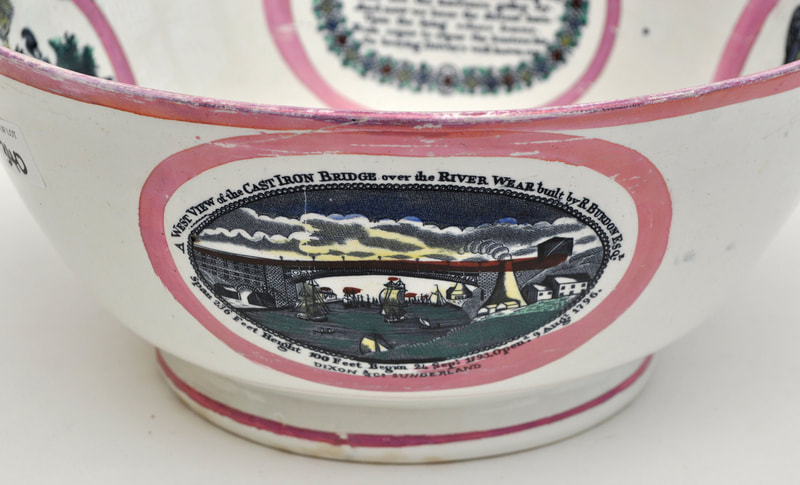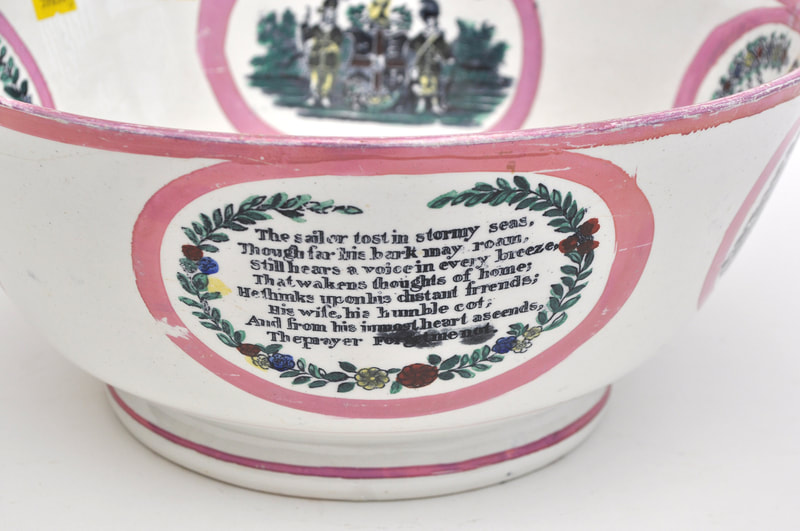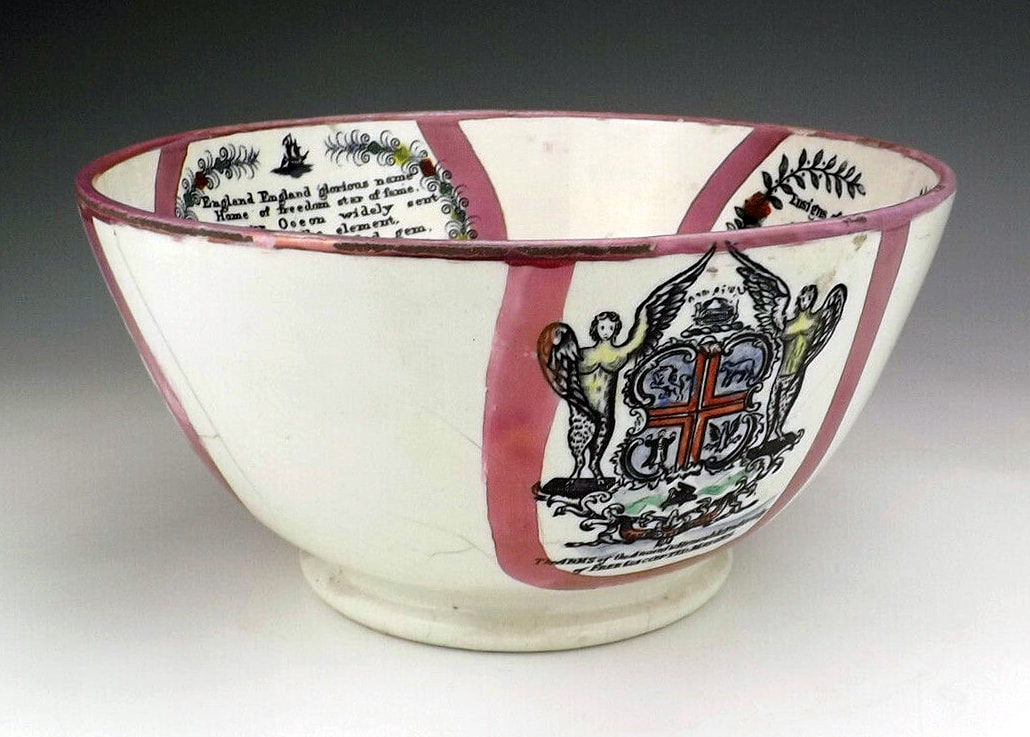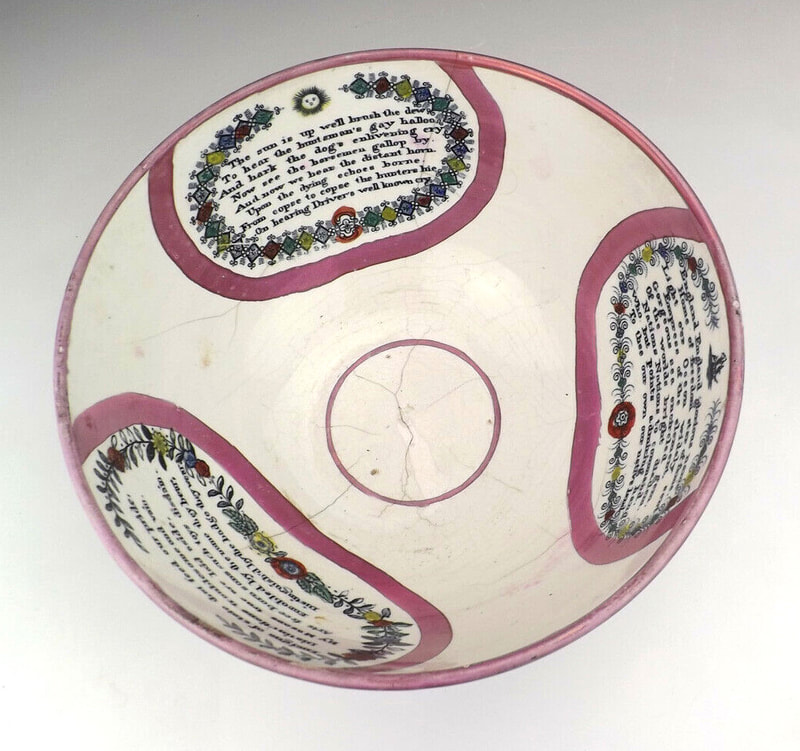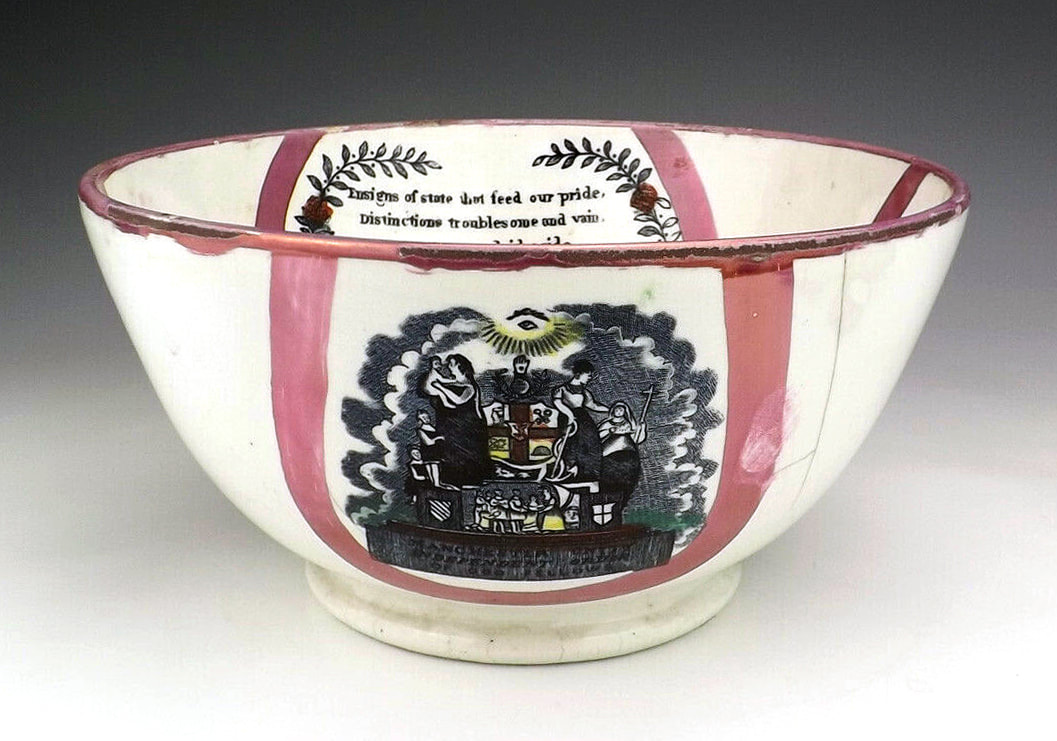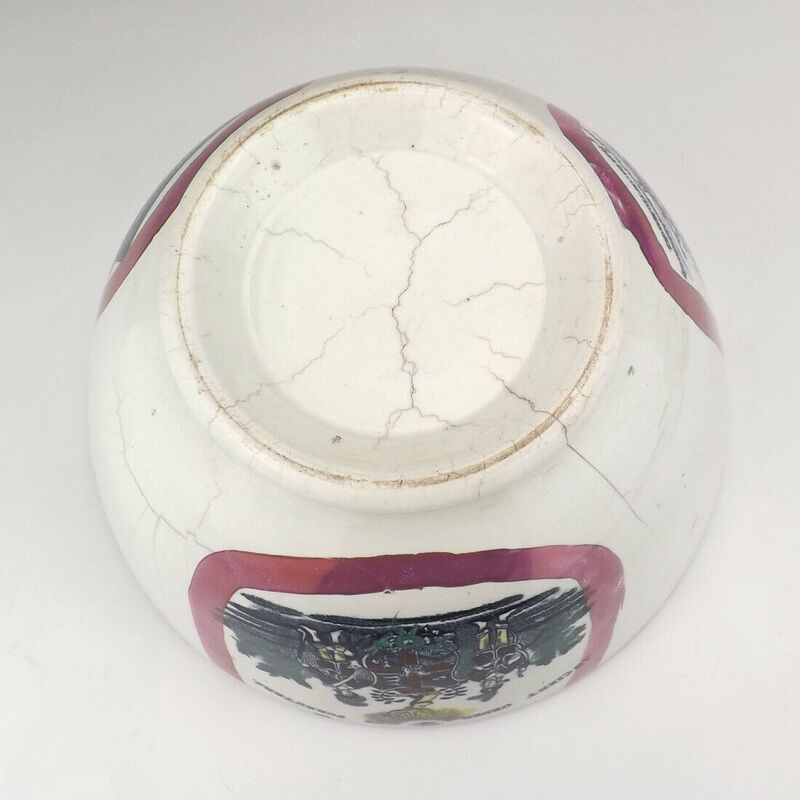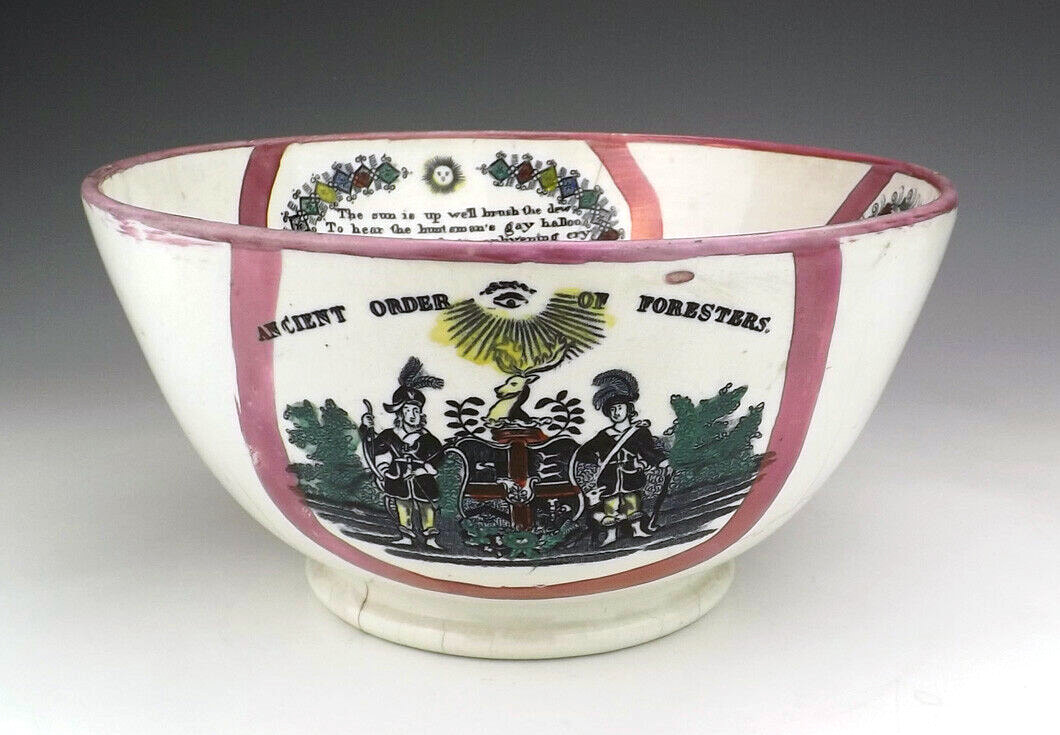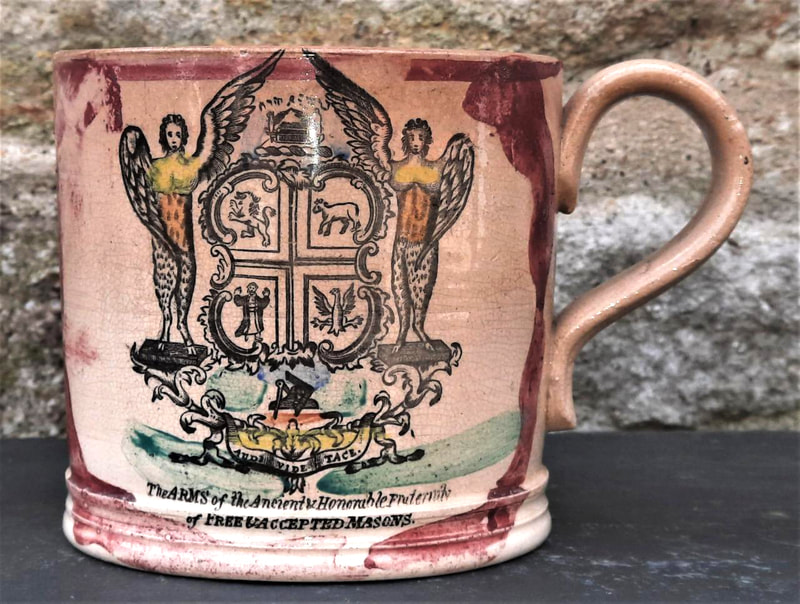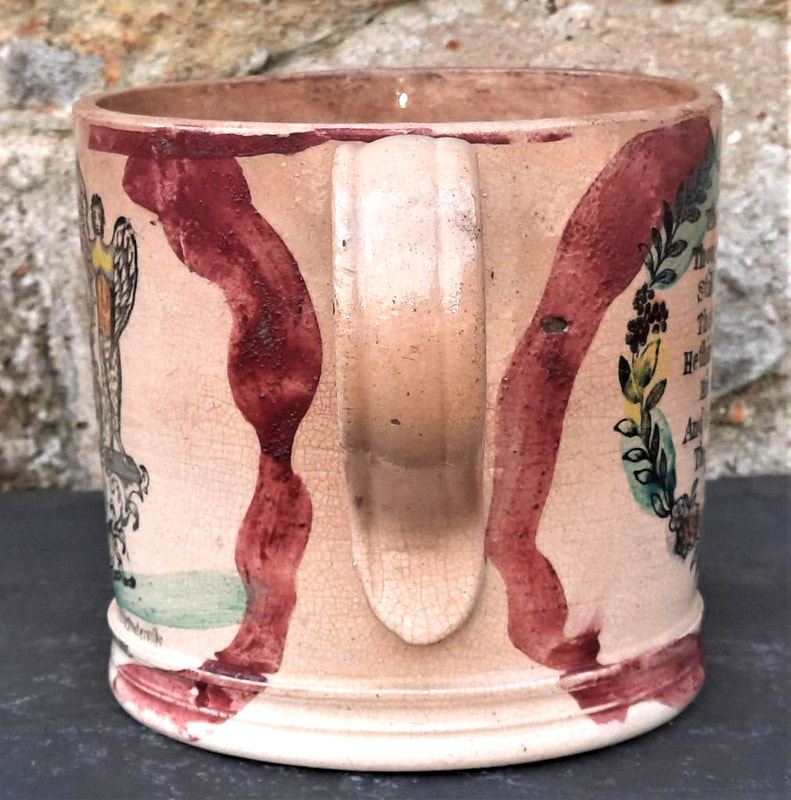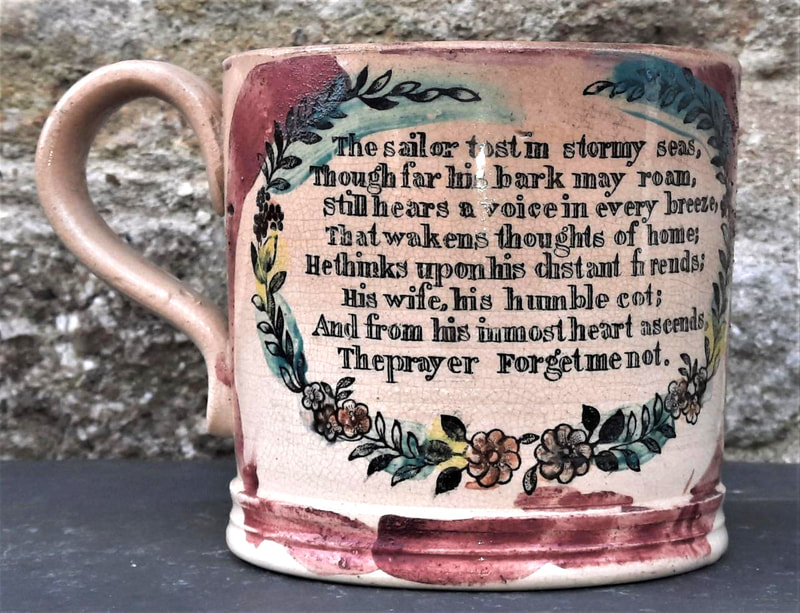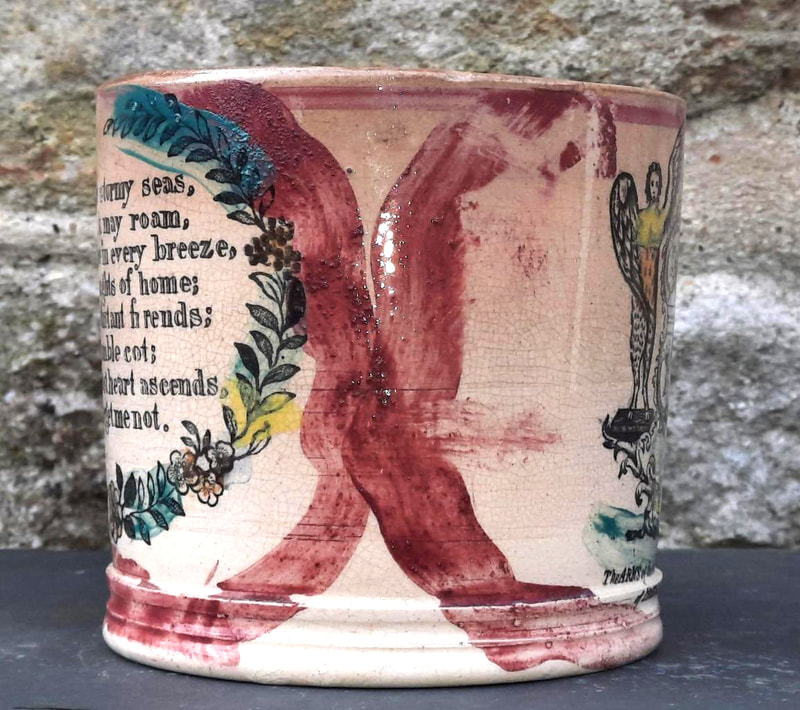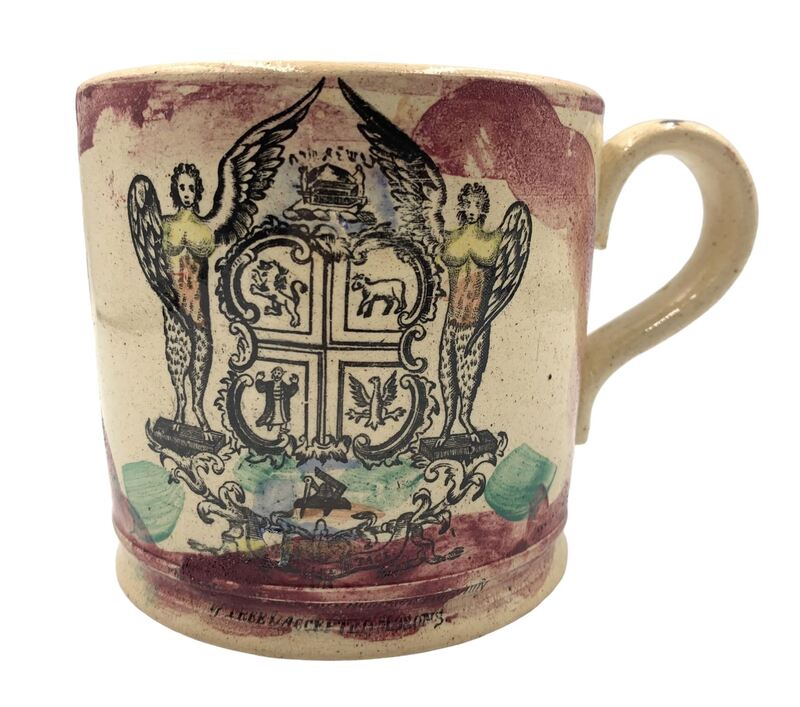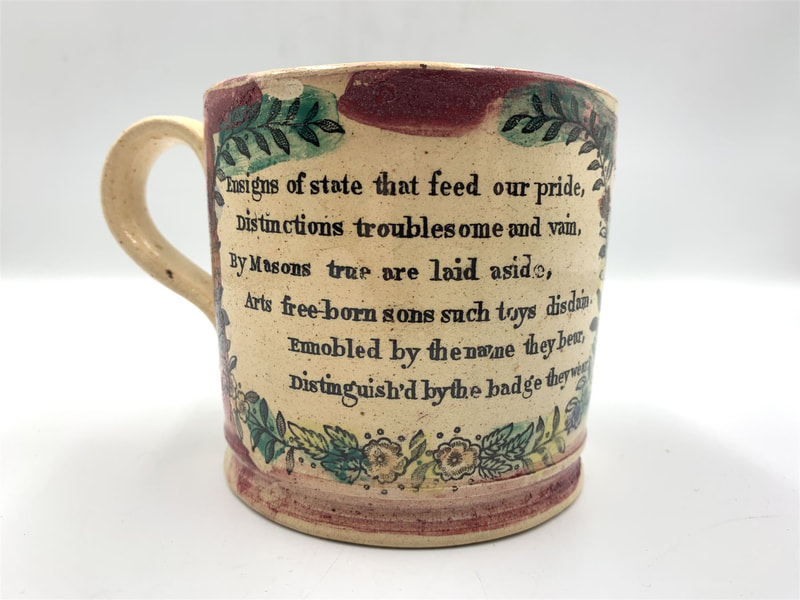The ARMS of the Ancient & Honourable Fraternity of FREE & ACCEPTED MASONS
|
The Garrison Pottery transfer appears to be an earlier impression from the copper plate in the Sunderland Museum & Winter Gardens, Tyne & Wear Archives & Museums collection, donated by the Ball family. The transfer plate appears to have been acquired by Scott from Dixon when the Garrison Pottery closed in 1865 and re-engraved in places. It was later acquired from Scott's by Ball's Deptford Pottery. |
|
Dixon, Phillips & Co, Garrison Pottery, Sunderland
The lustre decoration around the transfer is typical of late Garrison items, read more here.
Two slop bowls, the first without over-enamels to the transfer. Both impressed 'DixonCo'.
A lidded eel pot or butter dish with typical lustre decoration from the early 1860s.
Moore's Wear Pottery, Sunderland
A small bowl with the transfer inside and out, and impressed Moore & Co to the base. Beneath it, a large punch bowl with the transfer.
The transfer on a very large mug (compare the space around the transfer with the item below). Both mugs have typical Moore zig-zag lustre decoration.
The transfer on a more typically sized mug, although without a frog.
Scott's Southwick Pottery, Sunderland
Three bowls with the Dixon version of the transfer, and other transfers from that pottery, which must have been purchased by Scott's after 1865 when the Garrison Pottery closed. The wavy lustre decoration is typical of Scott's. The first two are marked Scott.
Ball' s Deptford Pottery
The last incarnation of the Dixon /Scott transfer at Ball's Deptford Pottery. This bowl has transfers from another copper plate from Scott's Southwick Pottery. The 'Scott & Sons' printed mark below the bridge transfer was blacked out when the partnership changed to Scott Brothers & Co in 1841. Presumably Ball acquired the copper plate around 1897 when Scott's closed. They then added a spurious mark of their own, 'Dixon & Co Sunderland'.
Another similar bowl.
Two similar mugs with naïvely painted splodges of enamels.
